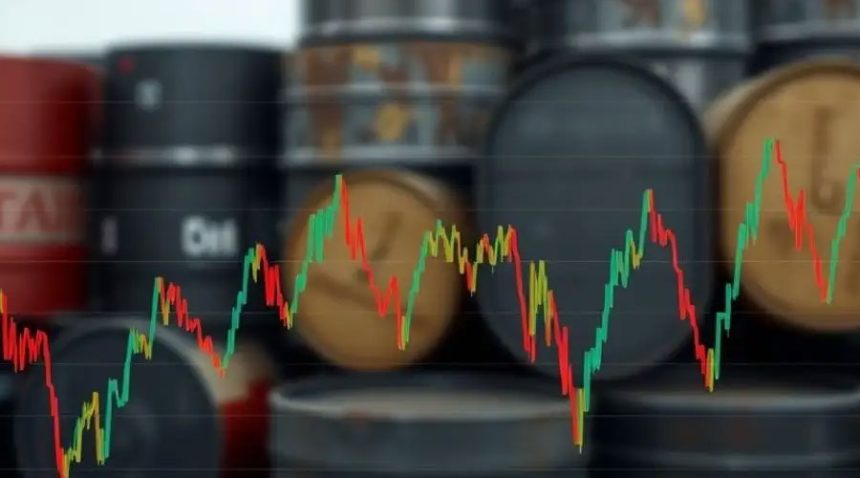For over two decades, China has been one of the biggest drivers of oil demand
The global oil market is going through a challenging phase this year. There are several important factors shaping the future of oil prices and demand. While many experts focus on China’s slowing economy and reduced oil usage, other issues are also emerging as serious threats. These include global trade tensions, decisions by major oil producers, geopolitical conflicts, and the shift toward renewable energy.
China’s Slowing Oil Demand: A Real Concern
For over two decades, China has been one of the biggest drivers of oil demand. From 2000 to 2023, about half of the world’s increase in oil usage came from China. However, things are now changing. Recent reports show that China’s oil demand growth is slowing down. In 2025, China is expected to increase its oil consumption by just 180,000 barrels per day, much lower than in past years.
There are several reasons behind this slowdown:
Electric Vehicles on the Rise: China is leading the world in the adoption of new energy vehicles, including electric and hybrid cars. In the first nine months of 2024, nearly 39% of all new car sales in China were electric. This directly reduces the need for gasoline.
High-Speed Trains: China has one of the largest and fastest rail networks in the world. With millions choosing fast trains over flights or long car rides, the demand for diesel and jet fuel has dropped.
Real Estate Slowdown: China’s property market has slowed down. Less construction means less diesel is used for heavy equipment and transport.
These trends suggest that China’s oil demand may have already peaked. If growth continues to slow, it will reduce global oil demand in the long term.
Other Growing Threats to the Oil Market
Even though China’s slowdown is significant, several other risks are currently affecting the oil market just as much—or even more.
Global Trade Tensions
Trade conflicts, especially between major economies like the United States and other nations, are creating uncertainty in global markets. New tariffs and trade barriers can hurt industries that rely heavily on oil, such as manufacturing and transportation. As a result, overall oil demand may fall.
In early 2025, global oil demand growth slowed from almost 1 million barrels per day in the first quarter to just 650,000 barrels per day in the following months. Trade disputes and weaker economic activity in many regions contributed to this decline.
OPEC+ Production Changes
OPEC+, a group of major oil-producing countries including Saudi Arabia and Russia, plays a big role in balancing oil supply and demand. In May 2025, OPEC+ announced that it would increase oil production by 411,000 barrels per day starting in June.
The goal of such decisions is to control oil prices and ensure a stable supply. However, if demand doesn’t match this increase in production, it could lead to an oversupply. This would cause prices to fall and hurt oil-exporting countries financially.
Geopolitical Conflicts and Sanctions
Political instability and conflicts around the world remain major risks to oil markets. Events in the Middle East, especially in areas where a lot of the world’s oil is transported, can create big problems. For example, if there is a conflict near the Strait of Hormuz—a key oil shipping route—it could lead to delays or shutdowns in supply.
Sanctions against countries like Russia and Venezuela also complicate the oil supply chain. These restrictions make it harder for certain producers to sell oil freely, creating supply gaps and uncertainty in the market.
Shift to Clean and Renewable Energy
More countries and companies are investing in clean energy and reducing their reliance on fossil fuels like oil. Governments are introducing laws to promote electric vehicles, wind, and solar energy. Large businesses are also moving towards using cleaner forms of energy.
This global transition is changing how much oil the world will need in the future. While it may take years for oil demand to significantly drop, the direction is clear: less dependence on oil over time.
Comparing the Threats
Each of these factors affects the oil market in different ways:
Short-Term Risks: Trade disputes and OPEC+ production decisions can lead to quick changes in oil prices. If oil supply increases but demand doesn’t, prices fall. On the other hand, if supply is cut during a time of high demand, prices rise rapidly.
Medium to Long-Term Risks: China’s changing energy habits and the global shift to renewable energy are long-term trends. These will gradually reduce oil demand over time, especially for transportation fuels like gasoline and diesel.
So, is China’s slowing oil demand the biggest threat? It is a big piece of the puzzle, but not the only one. The oil market is now being shaped by multiple powerful forces. Together, they create a much more complex and unpredictable environment than ever before.
What the Future May Hold
Looking ahead, oil producers and investors need to keep an eye on all these moving parts. A surprise decision by OPEC+ or a sudden geopolitical crisis can push oil prices up or down in a matter of days. At the same time, long-term trends like electric vehicle growth and clean energy adoption will slowly reduce the need for oil.
For oil-exporting countries, it will be important to diversify their economies and not rely too heavily on oil income. For oil-importing countries, securing a stable supply and managing costs will be key priorities.
The oil market is being influenced by more than just China’s slowing economy. While reduced demand from China is an important factor, other threats, such as trade disputes, oil production changes, political conflicts, and the transition to clean energy, are equally critical.
These multiple challenges are reshaping the global energy landscape. To understand where oil prices and demand are headed, one must look at the full picture. No single issue can explain the changes happening today. Instead, it’s a mix of short-term shocks and long-term shifts that will define the future of the oil market.





